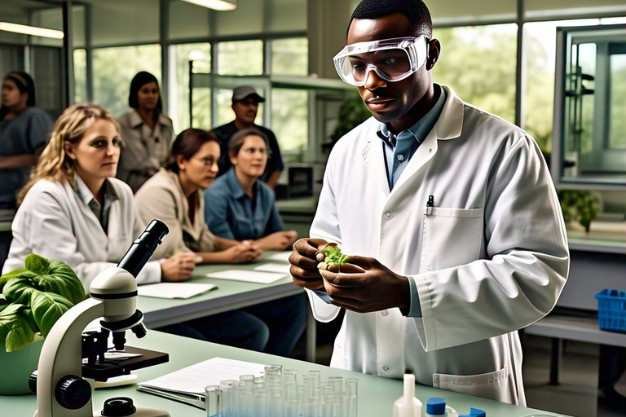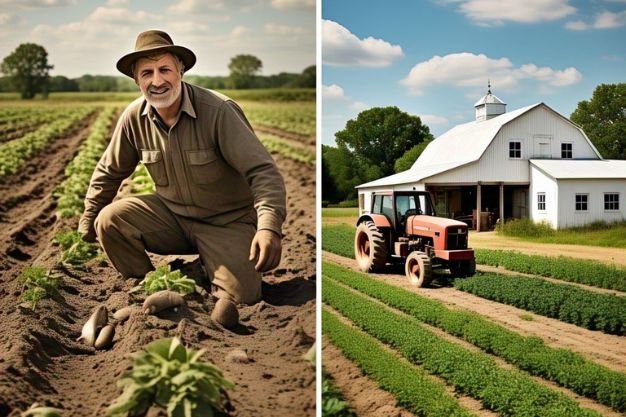Latest News
Organic Agriculture Growth: $57.5B Market & Key Challenges in 2024

Overview of this Blog
{ The organic farming sector in the U.S. is growing fast, with sales reaching $57.5 billion in 2021. Challenges include pests, soil health, and organic feed. The USDA’s NIFA funds research through programs like OREI and ORG to support organic farming, improve production methods, and help farmers transition to organic agriculture. }
Organic Agriculture Growth: With U.S. food and non-food product sales totaling $57.5 billion in 2021, the organic sector is the fastest expanding part of American agriculture. A recent National Agricultural Statistics Service poll indicates that alone U.S. farmers and ranchers sold certified organic goods valued $11.2 billion in 2021. There were 17,445 certified organic farms at the same period. NIFA provides programs meant to solve important problems of the organic sector if we are to maintain this increase. These initiatives involve non-food as well as food products and span the whole value-chain of organic goods.

Through the integration of research, education, and extension activities and programs to assess both the environmental consequences of organic agriculture and the environmental services supplied, NIFA supports initiatives to solve vital organic agricultural concerns, priorities, or problems.

Established in 1990, the National Organic Program (NOP) came under the Organic Foods Production Act (OFPA). Final guidelines for applying this legislation emerged in 2000; nationwide organic requirements for certification under a national organic label were first developed in 2002. Now among the fastest expanding sector of U.S. agriculture is the organic one. Organic agriculture is more than just a shift in production methods, hence even while annual demand for organic products is rising steadily, the organic industry still faces several difficulties. Two main groups could help to classify production difficulties:
- Obstacles to transition for people hoping to enter this exciting sector and production restrictions for those already certified. Lack of efficient methods to control diseases, pests, weeds, and nutrients; the growth of new markets; and availability of certified organic feedstuffs are some of the challenges to changeover.
- Top issues for certified organic growers are soil health, nutrients, illnesses, pests and weed control. Furthermore very important for the growth of the sector are freely available seeds and breeds. Organic animal agriculture has encountered even more challenging challenges. This is mostly because of the obstacles to changeover, which include certified organic feedstuffs, certified land for grazing and identity-preserved supply chains running from slaughter to the consumer.
- To guide transition decisions and enable creative management techniques for certified organic farms, further study, instruction, and extension are absolutely vital. This may also hasten the evolution of substitute approaches after the loss of important instruments such as the control of diseases in organic systems using antibiotics.
- Currently the main extramural funding source for organic agricultural research, education, and extension in the United States is the National Institute of Food and agricultural (NIFA) of the U.S. Department of Agriculture. Applications in organic agriculture are accepted in several of NIFA’s competitive programs. Two of the initiatives, meanwhile, are particular to organic farming. These comprise the Organic Transitions (ORG) projects and the Organic Agriculture Research and Extension Initiative (OREI).
Initiative in Organic Agriculture Research and Extension (OREI)
First awards were given in 2004; the 1990 Federal Organic Foods Production Act (OFPA), Title 21 of the 1990 Farm Bill, established OREI (~$50M/year now). The 2018 Farm Bill just passed reauthorizing OREI until 2023. OREI supports research, education, and extension projects aiming at improving the capacity of producers and processors who have already embraced organic standards to produce and market high quality organic agricultural products. Priority issues include social, physical, and biological sciences as well as economics. The Farm Bill defines eight OREI goals that are legally mandated:
- Supporting the evolution of organic farming techniques, breeding, and production systems including processing
- Analyzing the possible financial gains from organic farming practices and strategies for producers, processors, and rural areas
- Investigating foreign trade prospects for processed agricultural products grown organically
- Establishing desired features for organic products
- Finding commercial and policy limitations on the growth of organic farming
- Doing advanced on-farm research and development stressing observation of, experimenting with, and innovation for working organic farms including research on productivity, marketing, food safety, socioeconomic situations, and farm business management.
Analyzing ideal environmental results and conservation strategies related to organically grown agricultural items creating new, better seed kinds especially fit for organic farming . Established by the 1998 Agricultural Research, Extension, and Education Reform Act (AREERA), ORG (~$7.5 M/year 2023) received first grants in 2001. ORG concentrates on problems pertaining to the needs of organic farmers and processors implementing ecological services of organic agriculture. The ORG initiative supports the creation and application of biologically based management strategies meant to reduce the ecological, agronomic, and financial risks related to the shift from conventional to organic agricultural production systems. The curriculum covers fresh and developing challenges for producers switching to organic farming. The program aids in the development of creative management plans to guide decisions on transitions and enhance soil condition as well as other benefits of organic farming. It also funds the creation of substitute plans once important tools—such as the use of antibiotics for disease control in organic systems—are lost.
Complementary programs called ORG and OREI handle several stages and problems of the biological system. OREI emphasizes applied research, particularly needing to collaborate with organic farmers. During the transition period of the organic system, problems including disease, weed and insect population dynamics, as well as soil health are somewhat distinct. The Organic Transition program tackles those special difficulties without repeating OREI. ORG eligibility is restricted to schools and institutions; OREI is open to nearly any U.S. entity.












